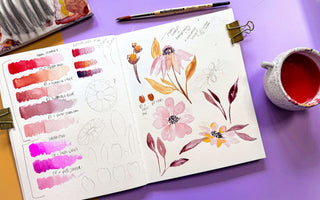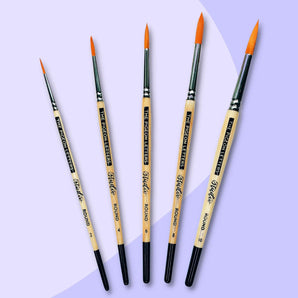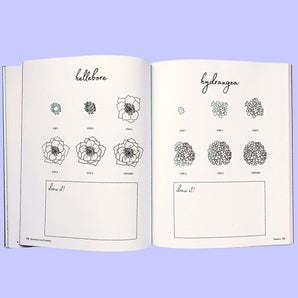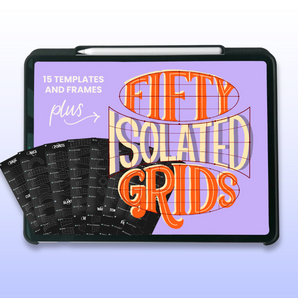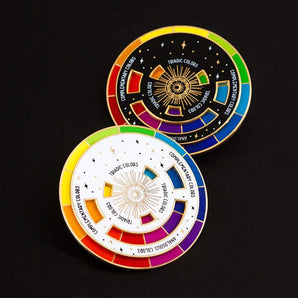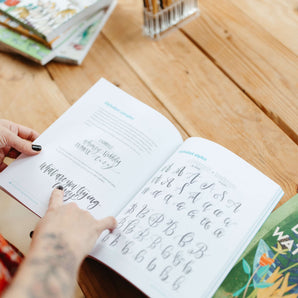Calling all plant parents! If you’ve been looking for a way to commemorate your beautiful plant babies, this is your sign! Who needs a pet portrait when you can make a PLANT PORTRAIT!?!?!?
BTW, Hi Friends, I’m Kate, I’m a watercolor artist, educator, and owner of the Watercolor Stationery Shop — Splatter & Bloom. Nothing brings me greater joy than sharing my love of watercolor with the world! Think of me as your very own adorable Bob Ross with a coffee obsession and volume control issues! So if you’re ready to be bold and try something new, Let’s dig in!
Painting plants can be so fun and such a great way to get into watercolor. I recently did a series about how to paint your very own plant portrait on TikTok, but so many of you have asked, “but what about variegated* leaves!!?!?!”
*Variegated leaves are any leaf that has more than one color. Ohhh pretty!
Don’t fret my friend, I’ve got you covered! In this blog I’m going to walk you through how to paint variegated leaves step by step, or should I say.. LAYER BY LAYER!
A little background if you’re new to watercolor - watercolor is a transparent medium–that means you can see through it. Unlike acrylic or oil paint where you start with the dark parts and work your way up to light, in watercolor, you start with the light parts and layer on the dark.
If you’re used to acrylic or oil, this can be a bit of a brain-shift! But don’t worry, we’ll get into the details in a second!
VOCABULARY TIME!
Today we’re going to be using the glaze technique to achieve this variegated effect.
GLAZE: When you wait for the first layer to dry before you add the second layer of paint.
Here is an example!

Okay now that we got the basics out of the way, let’s begin!
Supplies:
- Watercolors
- Brushes
- Watercolor paper
- Cup of water
- Paper/dish towel
Here are the supplies I am using today!
Paint: Winsor and Newton Opera Rose, Permanent Rose, Naples Yellow, Oxide of Chromium, and Perylene Green.
Paper: Arches 140lb Cold Press Paper
Brushes: I’m using Princeton Brushes Real Value size 5 round brush, but I JUST got Peggy’s amazing brushes from The Pigeon Letters and they may just be my new favorite thing! Be sure to check it out! I would recommend a size 6 or 8 for these leaves.
Today we’re going to be practicing two types of leaves because I honestly couldn’t choose! Both are so pretty and I think it helps to see a few examples. We’re using a Ficus Ruby Variegated Rubber Plant and a Pink Princess Philodendron for our references.
Here are the reference photos we’re working with:

(Left) Ruby Rubber Plant is from my little plant collection and the (Right) Pink Princess Philodendron belongs to Nellys, owner of the adorable shop - Cocoa Loves Grey
Step 1: Outline
Here I’ve made an outline with pencil. I free handed it, but you could totally trace it by printing the image out and holding it up to a window or over a light box. Usually I would make my pencil outline much lighter, but for the sake of the tutorial and so you can see it more clearly, I made it a bit darker.. *One thing to note is that once you paint over your pencil marks in watercolor, you won’t be able to erase the pencil, so make sure you’re okay with the lines before you start painting.

Step 2: Make a Wash Layer
We’re going to fill in our leaves with the lightest color we see. For the Ruby Rubber Tree I used an Opera Rose pink mixed with a little bit of Naples Yellow. If you don’t have these colors, any pink will work. The Naples Yellow just adds a bit of creaminess that I like, but it isn’t necessary. I used Permanent Rose and Naples Yellow for the Pink Princess. These layers are very light - so think more water, less paint. Fill in the whole leaf with this base color.
Step 3: WAIT FOR IT TO DRY!
This may be self-explanatory, but make sure to wait until it is totally dry or else the second layer will start to bleed into the pink. You can be patient and wait, or you can use a hairdryer like I do!

Step 4: First Glaze
We are working our way from lightest to darkest, so now we are going to use our Oxide of Chromium (or your lighter green color) to paint the lighter patches, right over the pink. Make sure to cover anywhere you see the green (light or dark). We’ll be adding the darker layer next.
When adding this green, I Like to do it in little strokes that follow the shape of the leaf, from stem toward the edge of the leaf. When looking at the reference photo, you’ll notice they are a bit curved - try to follow the curve of the veins so that you give the leaf a more natural shape.
Step 5: Wait Again!
For real! If you’re wondering how to know if your paint is dry, check out this video
Step 6: Second Glaze
Now we’re moving onto the darker green. For this I’m using Perylene Green but you can use your darker green color. We’re going to paint over our lighter green and add the darker spots. Note where the little lighter splashes are poking out. Be sure to leave little speckles of the lighter colors shining through. If you have masking fluid, you can use that, but if you don’t just try to leave little natural shaped circles with your brush.

Step 7: You guessed it — WAIT!
I mean it. I'm watching you!
Step 8: Details
With this last step, you’re adding in the details around the stem. The stem has a little shadow on the Ruby Rubber Plant, so we’ll add a line of the darker green along the left side of the stem. Then we’ll paint the stem pink. For the Philodendron, we’ll add some definition around the stem as well, though you’ll notice it isn’t as pronounced as the Ruby Rubber Plant.

Step 9: Party!! YOU DID IT!
Painting plants is seriously so fun! It can be super relaxing and a fun little keepsake for any plant lover in your life! If you want to check out how to paint more plants, be sure to check out my TikTok or Instagram for more tutorials!

Hi! I’m Kate! I’m a watercolor artist and educator. My goal is to inspire people to be bold and try new things (especially if it’s watercolor). I’m also the owner of Splatter & Bloom, a watercolor stationery shop where I create bold, vivacious designs to help you live more colorfully.




